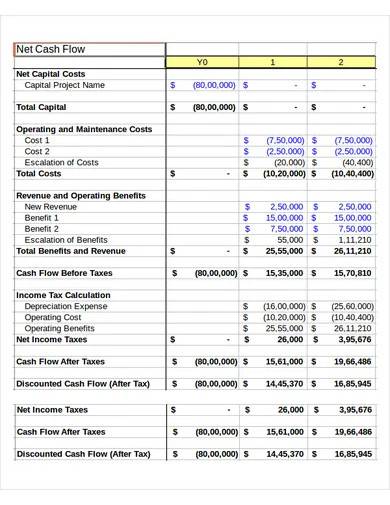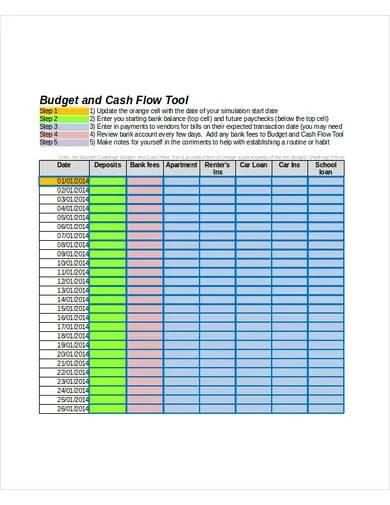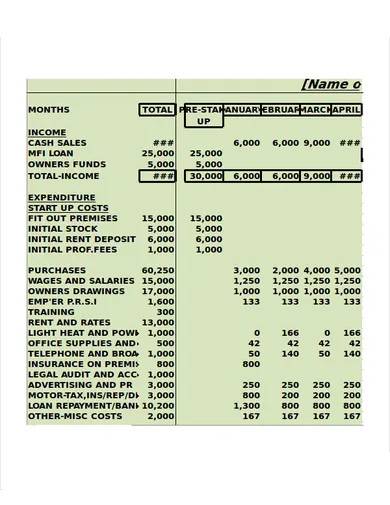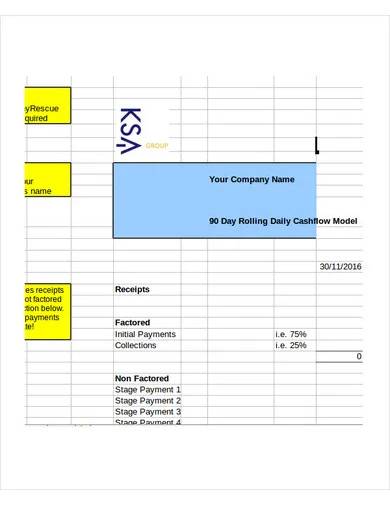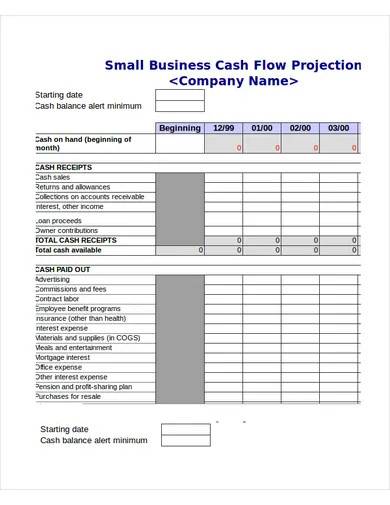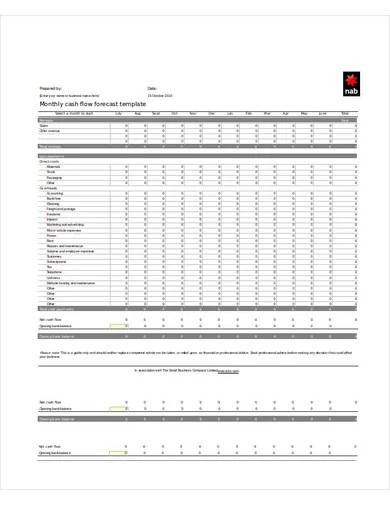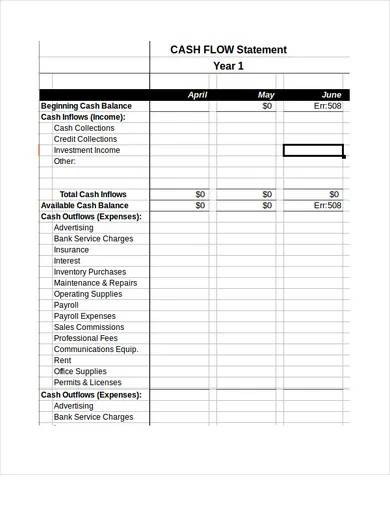Henry Ford once said, “A business that makes nothing but money is a poor business.” While it’s true that making an impact through your products and services matters, it’s undeniable that the business can only be that productive when it’s financially stable. A regular financial check keeps your business in perfect shape. Monitoring your cash flow statements is a necessary part of the process if you want to oversee your expenditures and net income closely.
FREE 11+ Cash Flow Samples
1. Monthly Cash Flow Forecast Template
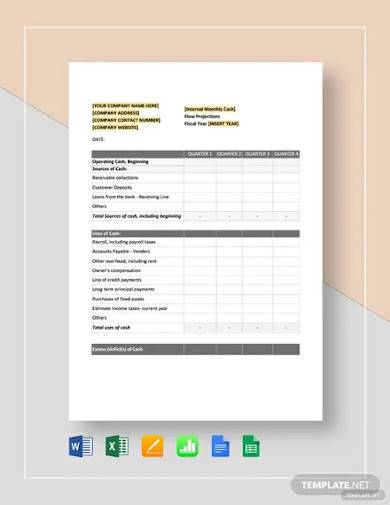
2. Submit of Cashflow Estimate Template
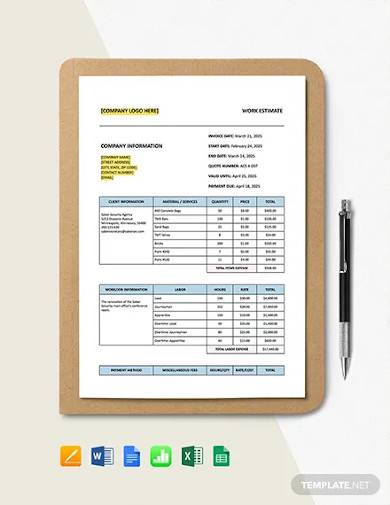
3. Construction Basic Cash Flow Forecast
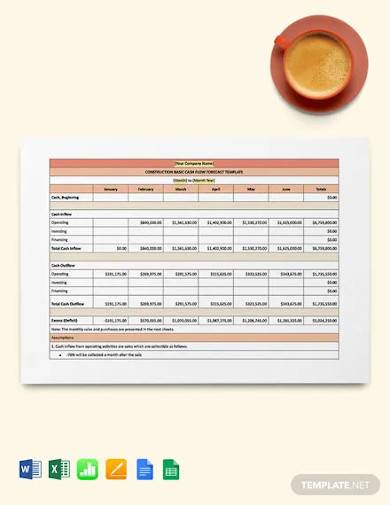
4. Freelance Cash Flow Sheet Template
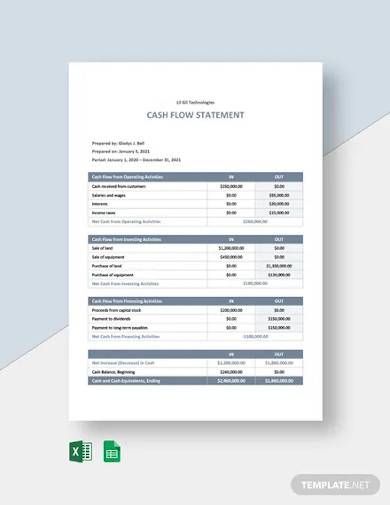
5. Free Cash Flow Statement Template
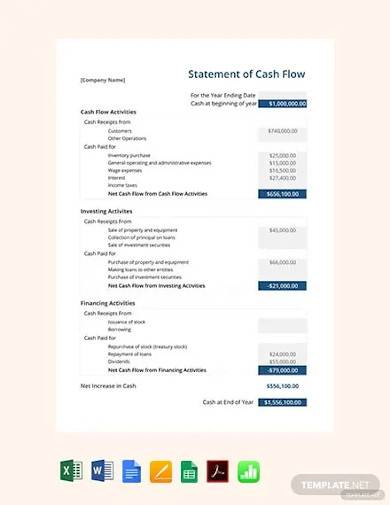
6. Net Cash Flow Template
7. Budget & Cash Flow Template
8. Sample Monthly Cash Flow
9. Sample Daily Cash Flow Template
10. Cash Flow Projection Template
11. Cash Flow Forecast Template
12. Sample Cash Flow Statement
What is a Cash Flow Statement?
In the most basic sense, a cash flow statement records all the money coming in and out of your business or better called as inflows and outflows. The results of a cash flow statement show a company’s ability to handle its finances. It provides details on how they generate their revenue, how they fund their operations, how they make investments, and how they fulfil their loans and other liabilities.
Expert Tips on How to Manage Your Cash Flow
According to Statista’s record of US’ small business owners on their cash flow estimate, 46% of them believed that their cash flow in the second quarter of 2020 for the next 12 months. Their positive on their business’ performance can mean that their operations have been treading the right path financial-wise. Being aware of your business’s financial plan stability helps you get an accurate data on your performance in the market and can offer a useful perspective on where to improve and what to alter to achieve a stellar state for your business.
Here are some expert tips on how to manage your cash flow:
1. Implement tight credit rules. Extending credit to clients is not new in the industry. When not implemented well, unpaid loans can lead to your business’ downfall. Have a clear payment plan with airtight rules to ensure that you’ll get what you lent back.
2. Work hard on increasing your sales. This shouldn’t be on the list anymore as sale increase is always on every business goal plan. However, if you want your cash flow to improve and help your secure assets while paying off your liabilities, your sales should have nowhere to go but up.
3. Impose cost-cutting when necessary. If your budget plan shows that you have to compromise on your supplies to take care of another financial matter, don’t hesitate to cut costs. Sacrifices are vital in running a business.
4. Secure a financial cushion. Sometimes, there are circumstances that can inevitably cause your business to go haywire. It’s important to have a back-up plan ready before that happens to soften the blow and continue your operations. This can come through savings or getting a loan.
How to Prepare a Cash Flow Statement?
Here are practical steps on how to prepare a cash flow statement:
1. Get Relevant Financial Records
Before you can work on your document, it’s no question that you should gather the data you need to make the calculations. In preparing for you cash flow statement, you need to heed the records on your balance sheet, income statement, records from your previous cash flows when available, and the expenditures transactions you made during the reporting period. All of these details will help you generate the results you’re looking for when you begin to do your cash flow spreadsheet. Aside from your previous cash flow statement, make sure all other sources are updated and relevant to the document you’re making.
2. Categorize Different Cash Flow Activities
There are several items involved when you begin to calculate the inflows and outflows of your finances. To eliminate any confusion and to make your cash flow table easily comprehensible, categorize them into the different components of your statement. Your cash flow components come in three types:
Operating activities – The operating activities are those that help you generate revenue daily. This includes customers buying your products, seeking consultations, and availing your business’ services.
Financing activities – Financing activities include the amount paid or received from long-term liabilities such as buying large-scale equipment, purchasing a property, and acquiring loans, among others.
Investing activities – These are business activities that pertain to making investments such as getting fixed assets, receiving loan repayments, and cash from shares.
3. Decide Which Method to Use
There are two types of methods when calculating your cash flow statement: direct method and indirect method. The direct method is cash-based accounting. It’s dependent on the cash received from customers and cash paid to suppliers and other items on your expenditure list during the reporting period. The indirect method is accrual-based. The process starts by referring to the business’s net income and gradually adjusting the figures by identifying the noncash outflows and inflows. Both produce the same results the latter is more popular when preparing for cash flow statements. Identify what works best for you and your operations.
4. Perform a Final Check
Now that you have the details and the method in place, all you need to do is to make the right forecast. Make sure that you’ve performed the right computation based on the method that you’ve chosen. Double-check on your records to see if you’ve included the correct details. The cash flow helps you determine if your revenue matches the figures in your transaction history. This should also help you determine if you have fulfilled your financial obligations. It’s only right that you should ensure that your input is all accurate.
FAQs
What are the three financial statements?
The three financial statements are balance sheets, cash flow statements, and income statements.
What is positive and negative cash flow?
Positive cash flow shows that the amount of inflow is more than the amount of outflow. On the other hand, negative cash flow is the generated results when you’re spending more than what you’re receiving in the business.
What is free cash flow?
Free cash flow refers to the remaining cash after taking out the operational expenses.
Calculating your cash flow generates reliable figures that can help you diagnose your business’ condition. The results of a cash flow statement can help you determine whether you’ve made wise financial decisions. If you need one, our premium cash flow templates here for you. Download now!
Related Posts
Sample Meeting Minutes Templates
Presentation Speech Samples & Templates
Ukulele Chord Chart Samples & Templates
Retirement Speech Samples & Templates
Weekly Schedule Samples & Templates
Contractual Agreement Samples & Templates
FREE 9+ Amazing Sample Church Bulletin Templates in PSD | PDF
Sample Business Card Templates
Sample Cashier Job Descriptions
Questionnaire Samples
FREE 10+ Sample HR Resource Templates in PDF
FREE 10+ HR Consulting Business Plan Samples in MS Word | Google Docs | Pages | PDF
FREE 49+ Sample Job Descriptions in PDF | MS Word
FREE 13+ Academic Calendar Templates in Google Docs | MS Word | Pages | PDF
FREE 10+ How to Create an Executive Summary Samples in Google Docs | MS Word | Pages | PDF

